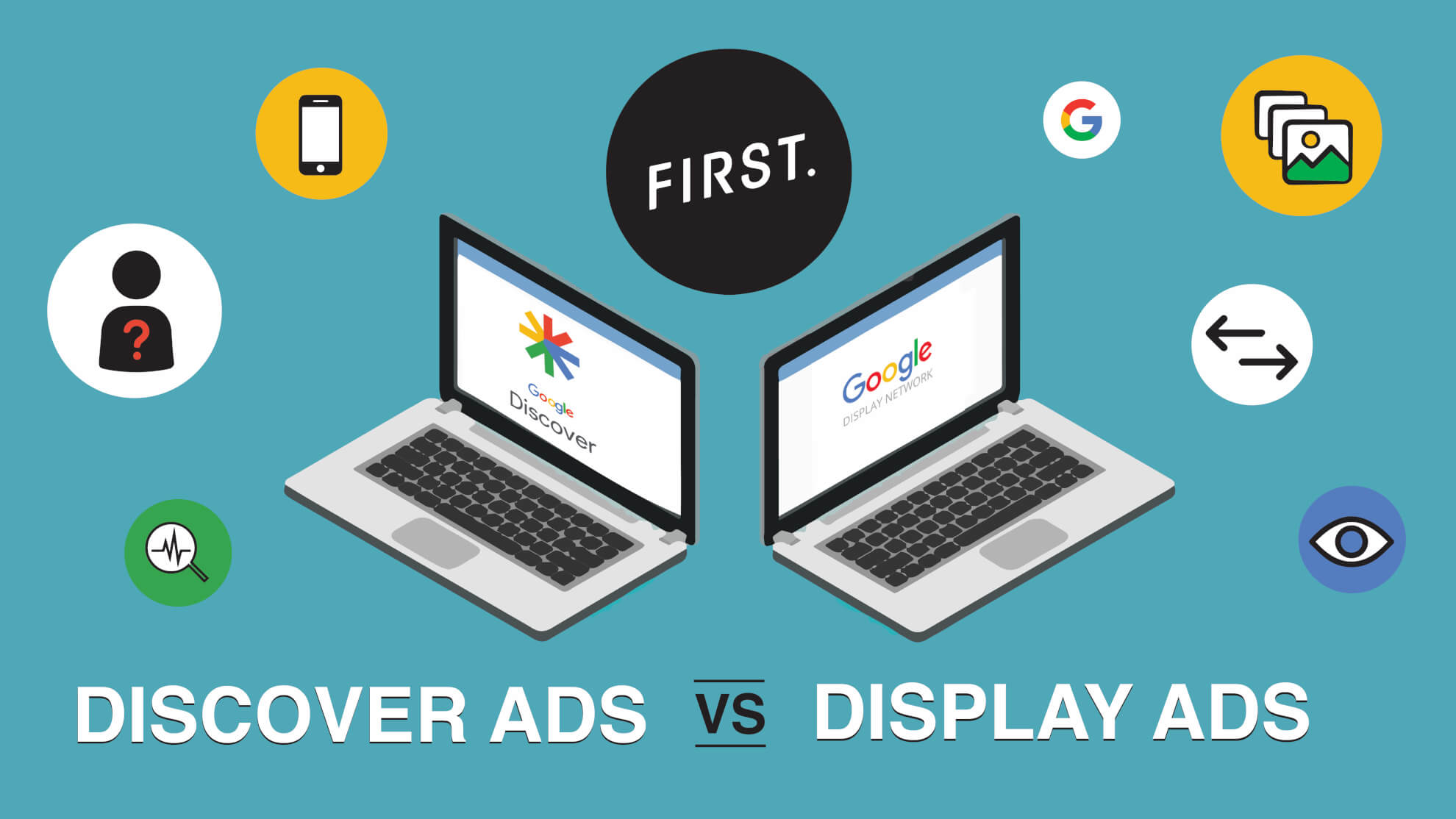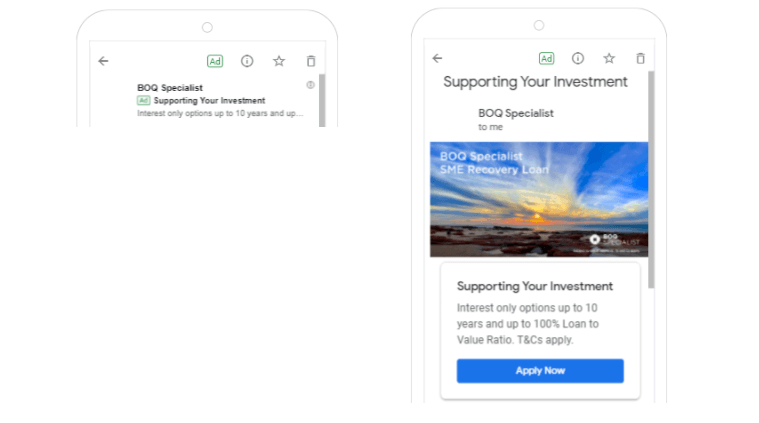
Display Ads vs Discovery Ads:
What’s the difference?
And when should you use them?
Let Google’s AI take the guesswork out of your paid advertising campaign. FIRST Digital can help you set up Discovery Ads to push conversions by delivering accurate ads to the right audience. Let’s explore the differences between Google Display ads & one of Google’s latest ad formats – Google Discovery ads – and discuss how both can help you achieve your marketing objectives.
What are Discovery Campaigns?
Discovery ads are mobile-friendly native ads with a visual focus. They use Google’s AI to combine images and written copy to display a compelling and engaging message to highly targeted audiences on 3 different platforms. Who the ads are reaching and where they appear is a key difference between Discovery and Display ads. Display ads are great for general awareness where Discovery ads are designed to reach people who are open to discovering and engaging with a brand.
Google developed Discovery campaigns to stimulate customer interest as well as drive action. They are designed to reach people with higher intent which sets them apart from Display campaigns.
By taking advantage of Google’s AI, Discovery campaigns enable you to deliver accurate and interesting ads to people who want them the most. The objective of the Discovery ad is to answer a user’s question or solve a problem before they even enter a query into the search bar.
What do Google Discovery ads look like and where do they show?
Similar to Responsive Display Ads, Discovery ads adapt to the placement they are showing on. Google will test different variations of images, headlines and descriptions, and use machine learning to determine which variation is best to show to a user at any given time.
Much like Facebook ads, Discovery ads can be single image ads or swipeable carousel ads which allow the user to interact with the ad on their device.
Discovery ads appear on Google’s Discover app, which is like a personalised news feed on your mobile phone and has over 800 million monthly users. They also show on YouTube – the second largest search engine in the world and within Gmail, which has over 1.5 billion users every month. In doing so these ads have an incredible reach.
Dicovery Ad on Youtube Discovery Ad on Discover Feed

Dicovery Ads in Gmail:
Closed Open

Images courtesy of BOQ Specialist
What’s the difference between Discovery ads and display ads?
Although the Responsive Display ads and Discovery ads are very similar in appearance there are some significant differences between the two:
Placements – Display ads can show on a wide range of websites and apps that accept Google advertising. Discovery ads show only on the 3 placements listed above (Google Discover, Gmail, YouTube).
Appearance – Discovery ads can be displayed as single image ads or carousel ads (up to 10 images). Images can be square, landscape, or portrait. Responsive Display ads do not have a carousel option but can include a video from your YouTube Channel.
Bidding – Discovery campaigns are conversion-focused so can use Maximise Conversions or Target Cost Per Acquisition (Target CPA). This means that Discovery Ads are shown to people who are more likely to convert on the site as it’s more intent focussed. Display Ads allow you to bid for Clicks, Impressions, Conversions, Conversion Value, ROAS, and also Manual bidding which allows you to use Display campaigns for more generic brand awareness advertising as well as sales or lead generation campaigns.
Targeting – Both Discovery and Display campaigns can use the same audience targeting methods such as retargeting site visitors, custom audiences, in-market, affinity, detailed demographics audience segments, and life events. However, because user interests and the types of content the users have been engaging with online are taken into consideration, Discovery ads are served to people with high intent. Therefore, they are more likely to engage and generate leads or sales.
Lead Forms – Discovery ads allow you to include a lead form within the ad when they appear in Gmail so that you can capture information from your customers straight from the ads.
Who should use Discovery campaigns?
If you’re a business that is seeking to push conversions, reconnect with customers or reach new customers then Discovery ads can be a great way to increase your scope. We’ve had some great success with B2B clients who have adopted Discovery campaigns early on and with its increasing popularity within the consumer market we’re seeing an uplift in sales with e-commerce clients.
If you want to reach your audience through Discovery or Display campaigns, or other forms of Search & Performance Media FIRST Digital can help. Talk to us today to find out more.
